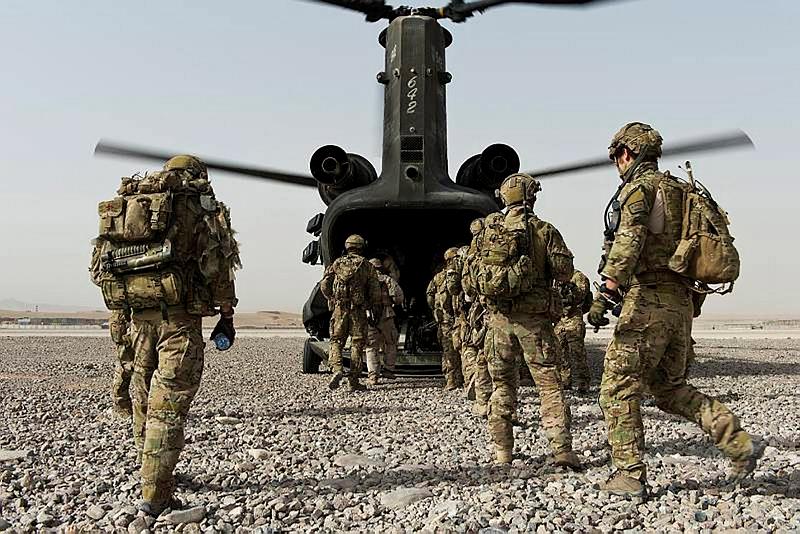
The Afghanistan mission has largely dropped off the political radar screen, but the public verdict seems clear: we’ll fail in our overall objective of leaving behind a stable country after 2014. Worse, Australian soldiers may have died in vain. However, I think there’s a case to be made that we still have a good chance to succeed, provided we get the next phase in the transition period right.
Our key objective isn’t to turn Afghanistan into a ‘Switzerland of west Asia’. Instead, it’s to prevent the country from ever again becoming a safe haven for international terrorism and a source of instability in South Asia. That means keeping the Taliban at arm’s length once the bulk of Western forces leave, to prevent them from regaining control over large parts of the country.
To do that, we first have to acknowledge some ‘Afghan realities’. The first is that our efforts at Western-style governance in Kabul have failed. The Karzai government has not only failed to develop into a viable political institution but has even actively opposed greater accountability and empowerment of other branches of government. As well, a heavily centralised government in Kabul will have minimal influence in the provinces in the coming years. Instead, the political structure of Afghanistan will be more than that of a loose Federation, so there’ll be local Afghan solutions for both governance and security, especially across the Pashtun area, the Taliban’s traditional stronghold. The Taliban will be a central political force in the southern parts and there will be a re-emergence of traditional forms of law and order that the west wouldn’t necessarily endorse.
The second hard truth is that Afghanistan is a long way off from a self-sustaining economy. As Ashley Tellis has written, despite the fact that the Afghan economy has grown by double digits since 2002, Kabul is still on a ‘dependency-induced pattern of economic growth underwritten by large quantities of foreign aid’. The figures are staggering: in 2012, international military and development aid, and spending in the country by foreign troops accounted for roughly 97% of Afghanistan’s GDP. As troop numbers decrease the Afghan economy has already started to shrink. Unless regional powers (such as China, India and Pakistan) start investing on a significant scale, this pattern is unlikely to change.
But this hardly means that the Taliban will necessarily be able to march into Kabul again. Instead, there’s a good chance that, unlike the central government, the Afghan National Army (ANA) will indeed become a viable Afghan institution by 2014. The ANSF haven’t just reached the recruitment target of 352,000 men, they are also now participating in at least 90% of ISAF operations, taking the lead in almost half of these missions, and also suffer the majority of casualties. What’s more, long-standing shortcomings such as political patronage appointments and corruption have been partially addressed; and there are encouraging signs of increased professionalism of ANA units. In short, a professional ANA backed by western support is our best bet to negate any Taliban threat to the key districts and lines of communication in Afghanistan.
But the ANSF and local militias won’t be capable of independently securing Afghanistan against the wide range of terrorist and insurgent groups that will still be present in the country and in neighbouring Pakistan after 2014. So the key focus of our coalition efforts for the next phase of the transition needs to be on strengthening the ANA and making it more professional. This will be an important step in preventing the ANA from disintegrating when regional and local tensions flare up following the withdrawal of ISAF troops.
At least four measures are critical in this respect. First, there needs to be a firm commitment to funding the ANA—the Afghan central government won’t be able to. By 2017 a reduced ANSF of about roughly 230,000 troops would cost US$ 4.1bn. This is a modest figure compared to the billions spend each month on coalition forces and the international community, including Australia, should certainly be able to meet this target. At a recent ASPI lunch, the UK Chief of Defence Staff, General Sir David Richards pointed to an important historical lesson: when the Red Army withdrew from Afghanistan in 1989, the country didn’t immediately collapse into chaos. It was only when Moscow stopped funding the Afghan national forces a few years later that the country plunged into a bloody civil war that led to the Taliban taking over. We can certainly avoid making the same mistake.
At the operational level, we need to make sure that the ANA gets access to heavy weapons and air mobility to counter any serious insurgent challenge in provincial areas. Allies therefore need to be prepared to provide close air support beyond 2014. And the ongoing implementation of the concept of ‘layered defence’ in the notorious Pashtun Belt will be central to keeping insurgents at bay. This requires a Western commitment to continue to deploy special operations forces in these areas to serve as mentors for the ANA, the Afghan Local Police (ALP) or Local Security Forces (LSF). They’ll also need to continue to conduct selected strike missions to eliminate enemy elements.
The emphasis on special forces and specialists in mentoring during the next transition phase will also foster ANA’s professionalism by developing an esprit de corps at the Kandak and the Brigade levels. Generating a sustainable level of loyality among ANA units will not only improve its overall battle performance, but also contribute to the ANA’s commitment to the defence of a broader Afghan national identity, creating an additional layer against a return of the post-1992 warlordism.
The next 24 months will be critical in the transition process. Even with reduced troop numbers, there is still ample opportunity for Western forces, including Australia, to achieve our key objective in Afghanistan.
Benjamin Schreer is a senior analyst at the Australian Strategic Policy Institute. Image courtesy of Department of Defence.